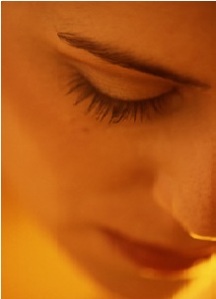The art of revision rhinoplasty surgery has been developed over 35 years fixing or altering previously operated on structures of the nose practicing and perfecting the “closed” surgical technique. The “open” surgical technique for nasal surgeries limited the surgeon in many significant ways. Open technique does not allow certain degrees of finesse in placing cartilage grafts in exacting locations in order to correct deformities that are commonly found in revision rhinoplasties. In my experience with the closed technique, making small incisions and taking cartilage from the nasal septum or the ear, I can accurately place small millimeter-sized grafts into various locations throughout the nasal tip, the dorsum, and sides of the nose sparing the patient extensive and invasive surgical intervention. Open nose surgery requires a much greater disturbance of the nasal structures. A surgeon cuts the skin under the tip of the nose and literally removes the soft tissue back from the cartilage and bridge giving the doctor a completely open visual field and access to deep parts of the nose. This technique is used to teach plastic surgeons how to manipulate the nose and remove unwanted sections to shape and reduce areas in size, so it is a far easier method. The problem is, it completely exposes the most vulnerable part of a patient’s face and is far more abrasive in terms of the invasiveness of the procedure. This technique also distorts the normal anatomical attachments of the skin to the nasal bones and nasal cartilages, further complicating the surgeon’s ability to perform a natural revision rhinoplasty. Infection risk and scar tissue formation both increase dramatically with the open technique. One of the most important factors to consider is the result in shape and size is often much harder to determine with this method, often resulting in undesired results.
Closed: How It Works
The patient is seen in the treatment room preoperatively and in the upright position. The surgeon has direct communication with the patient prior to surgery, and exact locations for cartilage grafts are discussed and agreed upon by both the patient and the surgeon. Once the various ink marks are made on the outside of the nose, the patient is then taken to the operating room and given intravenous sedation—a voiding all narcotics and anesthesia gases. This type of anesthesia virtually eliminates nausea and drowsiness which are the most common negative side effects of anesthesia. After harvesting cartilage from the nasal septum or the ear (and occasionally the rib), small incisions are made inside the nose in order to accomplish the reconstructive portion of this rhinoplasty procedure. The anesthetic used is local in the entire area of the nose in addition to intravenous sedation. Intubation and deep general anesthesia is avoided to ensure much less nose bleeding encountered during the procedure, allowing for even further improvement in technique because of the limited amount of blood loss. The small cartilage grafts are placed where the surgeon marks the external aspect of the nose with ink in order to map out the correct placement of the grafts. There is very little discomfort to the patient postoperatively because packing is never used and because of the less invasive nature of the closed technique. Also during recovery pain and swelling are absolutely minimal because the open technique has been avoided preventing unnecessary incisions and unnecessary dissection throughout the nose area. The exact appearance of the nose can be noted right after the surgery, and considering the minimal swelling the long two to three-month delay in seeing the final result is avoided when the open technique is used.
The closed nose surgery technique is used by the most skilled plastic surgeons with results far surpassing those of the open nose surgery technique. The procedure results in extremely high patient satisfaction with minimal discomfort and quick recovery time. Choose this method for rhinoplasty and revision nose surgeries every time!
http://www.clavin.com
http://www.facebook.com/clavincenter
1-310-829-5977


